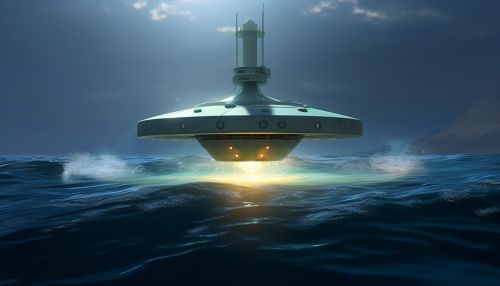Sonar
Introduction
Sonar, an acronym for Sound Navigation and Ranging, is a technique that uses sound propagation to navigate, communicate with or detect objects on or under the surface of the water, such as other vessels. Developed during the First World War, sonar technology has been instrumental in maritime navigation, scientific research, and military applications.
History
The concept of sonar originated in the early 20th century, with the first practical application of the technology occurring during the First World War. The technology was initially developed to counter the threat of submarine warfare, which had proven devastatingly effective in the early stages of the conflict. The first sonar devices, known as ASDIC systems, were used by the British Royal Navy to detect German U-boats.
Principles of Operation
Sonar operates by emitting an acoustic signal or pulse of sound into the water. If an object is in the path of the sound pulse, the sound bounces off the object and returns an "echo" to the sonar transducer. The time it takes for the echo to return is measured and used to calculate the distance to the object.
Types of Sonar
There are two primary types of sonar: active and passive. Active sonar systems emit an acoustic signal, or pulse of sound, and then listen for the echo of this pulse. This type of sonar is used to measure the distance to an object, because the speed of sound in water is constant and the time it takes for the echo to return can be used to calculate this distance.
Passive sonar systems do not emit their own signal, but instead listen for sounds made by other objects. This can be used to identify objects, because different objects make different sounds. For example, a submarine may make a different sound than a whale or a school of fish.
Applications
Sonar has a wide range of applications, from navigation and fishing to research and military uses. In navigation, sonar is used to map the ocean floor and detect obstacles that could pose a hazard to ships. In fishing, sonar is used to locate schools of fish. In research, sonar is used to study the oceans and the life that inhabits them. In the military, sonar is used to detect enemy submarines and mines.
Limitations and Challenges
Despite its many applications, sonar is not without its limitations and challenges. The accuracy of sonar readings can be affected by a number of factors, including the temperature and salinity of the water, the type and density of the sea floor, and the presence of other objects in the water. Additionally, sonar signals can be disrupted by noise from other sources, such as ships, wind, and marine life.
Environmental Impact
The use of sonar, particularly active sonar, has been linked to a number of negative impacts on marine life. Some marine animals, such as whales and dolphins, use sound to navigate, communicate, and find food. The loud sounds produced by active sonar can interfere with these activities and can even cause physical harm to these animals.
Future Developments
As technology continues to advance, so too does the potential for new and improved sonar systems. Future developments in sonar technology may include the use of higher frequencies for better resolution, the development of more sophisticated signal processing techniques, and the integration of sonar with other technologies, such as lidar and radar.


